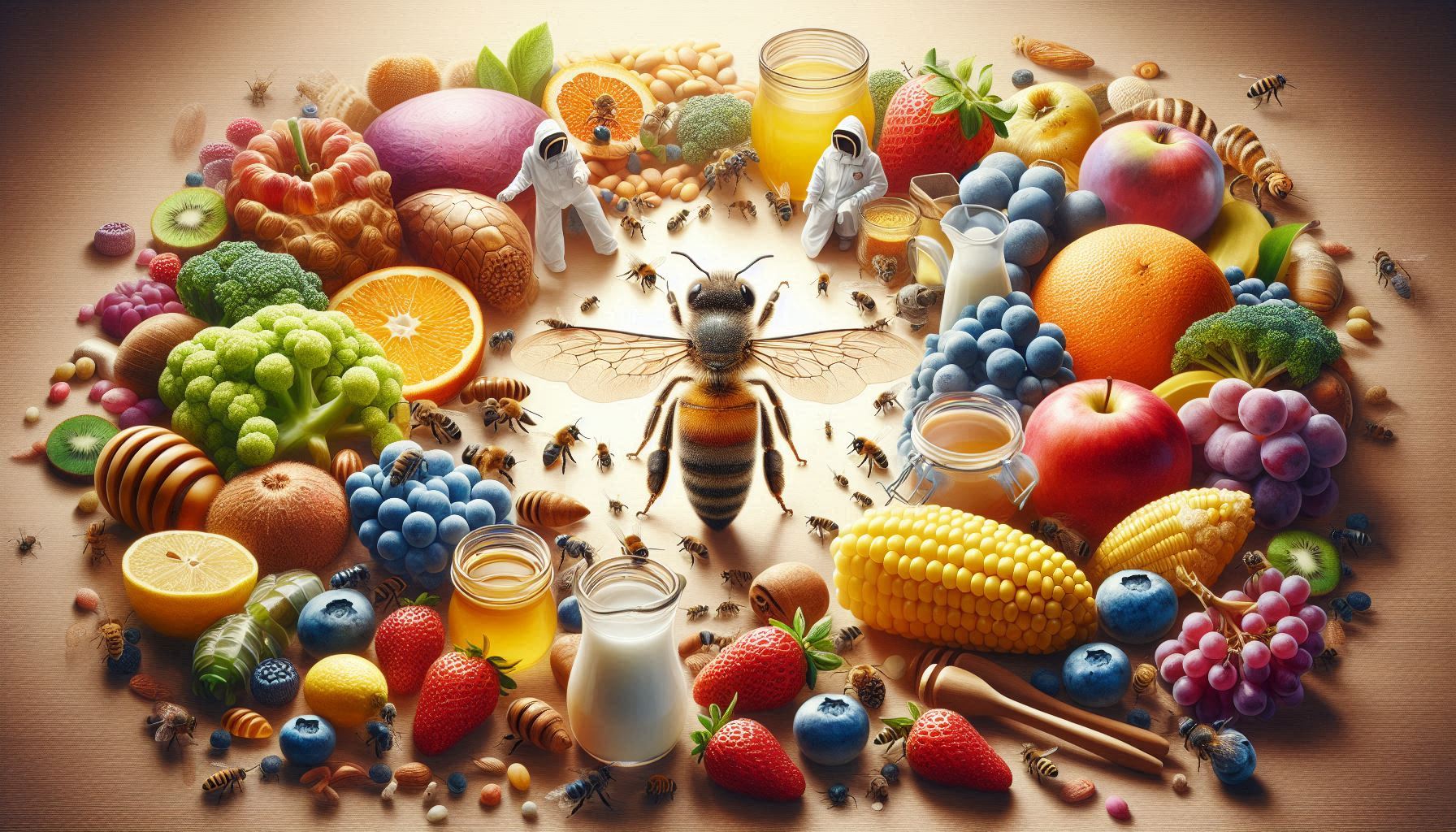Pollinators play a crucial role in our ecosystem, particularly in food production. They are responsible for the reproduction of many plants, including a significant portion of the crops we rely on for sustenance. This blog post will explore the importance of pollinators, focusing on bees and other pollinators, their contributions to food production, the challenges they face, and what we can do to protect them.
What Are Pollinators?
Pollinators are animals that help plants reproduce by transferring pollen from the male parts of a flower (anthers) to the female parts (stigmas). This process is essential for the fertilization of plants, leading to the production of fruits and seeds. While many animals can act as pollinators, the most well-known and effective are bees, butterflies, birds, bats, and some insects.
The Role of Bees in Pollination
Bees are among the most important pollinators, responsible for pollinating approximately 70 of the 100 crop species that feed 90% of the world. Honeybees, in particular, are known for their efficiency in pollination. They visit thousands of flowers each day, collecting nectar and pollen, which they use to feed their colonies. In the process, they inadvertently transfer pollen from one flower to another, facilitating plant reproduction.
Other Important Pollinators
While bees are the most recognized pollinators, other species also play vital roles in the ecosystem. These include:
- Butterflies: Known for their beauty, butterflies are also effective pollinators, particularly for flowering plants.
- Birds: Hummingbirds, for example, are attracted to brightly colored flowers and help in pollination as they feed on nectar.
- Bats: Certain species of bats are nocturnal pollinators, visiting flowers that bloom at night and aiding in the reproduction of plants like agave and some fruit trees.
- Other Insects: Beetles, moths, and even some flies contribute to pollination, although they may not be as efficient as bees.
The Contribution of Pollinators to Food Production
Pollinators are essential for the production of many fruits, vegetables, nuts, and seeds. According to the Food and Agriculture Organization (FAO), around 75% of the world’s food crops depend on pollinators. Here are some key contributions:
Fruits and Vegetables
Many of the fruits and vegetables we consume daily rely on pollination. For instance:
- Apples: Honeybees are crucial for apple pollination, significantly affecting yield and fruit quality.
- Berries: Strawberries, blueberries, and raspberries all benefit from bee pollination, leading to larger and more abundant crops.
- Cucumbers and Squash: These crops require pollination to produce fruit, and bees are the primary pollinators.
Nuts and Seeds
Pollinators also contribute to the production of nuts and seeds, which are vital for both human consumption and animal feed. For example:
- Almonds: Almond trees require cross-pollination, primarily by honeybees, to produce nuts.
- Sunflower Seeds: Sunflowers are another crop that benefits from pollination, leading to higher seed yields.
Economic Impact
The economic value of pollinators is immense. The FAO estimates that pollinators contribute over $235 billion to global agricultural production annually. This value comes from increased crop yields, improved quality, and the diversity of food available to consumers.
Challenges Facing Pollinators
Despite their importance, pollinators face numerous challenges that threaten their populations and, consequently, food production. Some of the main threats include:
Habitat Loss
Urbanization, agriculture, and deforestation have led to significant habitat loss for pollinators. As natural habitats are destroyed, pollinators lose their food sources and nesting sites, leading to population declines.
Pesticides
The use of pesticides in agriculture can have detrimental effects on pollinators. Chemicals designed to kill pests can also harm beneficial insects like bees, leading to reduced populations and impaired pollination services.
Climate Change
Climate change is altering the distribution of plants and pollinators, disrupting the delicate balance of ecosystems. Changes in temperature and weather patterns can affect flowering times and the availability of food for pollinators.
Disease and Parasites
Pollinators, particularly honeybees, are susceptible to various diseases and parasites, such as the Varroa mite. These threats can weaken colonies and reduce their ability to pollinate crops effectively.
What Can We Do to Protect Pollinators?
Protecting pollinators is essential for ensuring food security and maintaining biodiversity. Here are some steps we can take:
Create Pollinator-Friendly Habitats
Planting native flowers and creating gardens that provide food and shelter for pollinators can help support their populations. Consider incorporating a variety of flowering plants that bloom at different times to provide a continuous food source.
Reduce Pesticide Use
Minimizing the use of pesticides in gardens and agricultural practices can help protect pollinators. Opt for organic farming methods and use integrated pest management strategies to reduce chemical exposure.
Support Local Farmers
Buying locally grown produce can help support farmers who practice sustainable agriculture and prioritize pollinator health. Look for organic and pollinator-friendly products at farmers’ markets and grocery stores.
Educate Others
Raising awareness about the importance of pollinators and the challenges they face can inspire others to take action. Share information through social media, community events, and educational programs.
Conclusion
Pollinators are vital to our food production systems and the health of our ecosystems. By understanding their importance and taking steps to protect them, we can ensure a sustainable future for both pollinators and the food we rely on. It is our responsibility to create a world where pollinators can thrive, benefiting not only our agriculture but also the environment as a whole. Together, we can make a difference for these essential creatures and the future of food production.

